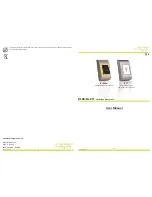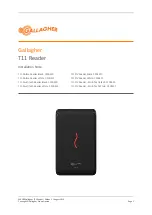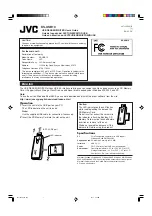
- 31 -
L5034G4 AGCO
www.NewLeader.com
(800) 363-1771
306375-AA-E
Hydraulic Hose
Hose assemblies in operation should be inspected frequently for leakage, kinking, abrasion, corrosion or
other signs of wear or damage� Worn or damaged hose assemblies should be replaced immediately�
WARNING
Testing should be conducted in approved test stands with adequate guards to protect the
operator�
Clean
Clean assembly by blowing out with clean compressed air� Assemblies may
be rinsed out with mineral spirits if the tube stock is compatible with oil,
otherwise hot water at 150°F (65�55° C) maximum may be used�
Inspect
Examine hose assembly internally for cut or bulged tube, obstructions, and
cleanliness. For segment style fittings, be sure that the hose butts up against
the nipple shoulder; band and retaining ring are properly set and tight, and
segments are properly spaced� Check for proper gap between nut and
socket or hex and socket� Nuts should swivel freely� Check the layline of the
hose to be sure the assembly is not twisted� Cap the ends of the hose with
plastic covers to keep clean�
Test
The hose assembly should be hydrostatically tested at twice the
recommended working pressure of the hose�
Test pressure should be held for not more than one minute and not less than
30 seconds� When test pressure is reached, visually inspect hose assembly
for: 1. Any leaks or signs of weakness. 2. Any movement of the hose fitting
in relation to the hose� Any of these defects are cause for rejection�
Storage and Handling
Hose should be stored in a dark, dry atmosphere away from electrical equipment, and the temperature
should not exceed 90° F (32° C)�
Conveyor Chain
WARNING
Stay out of the hopper body� If it’s necessary to enter the hopper, return to the shop, empty
body, turn off all power, set vehicle brakes, lock engine starting switch and remove keys
before entering� Tag all controls to prohibit operation� Tags should be placed, and later
removed, only by person working in the body�
Hose down unit and remove any material build-up on sprockets and under chain�
NOTICE!
The conveyor will move away from the bottom panel if material accumulates under the conveyor or
on the sprockets� The more material that accumulates, the closer the chain will come to the chain
shields� If the conveyor should catch a chain shield, it could permanently damage the conveyor, the
chain shields or the unit� Do not remove material while conveyor or spinner is running!
Lubrication & Maintenance
















































